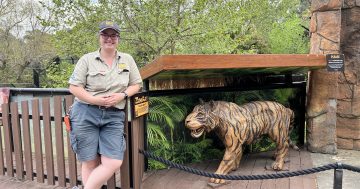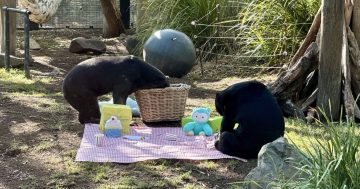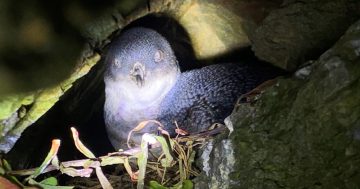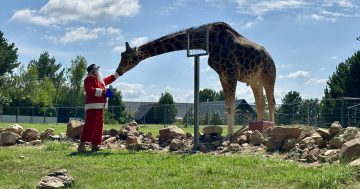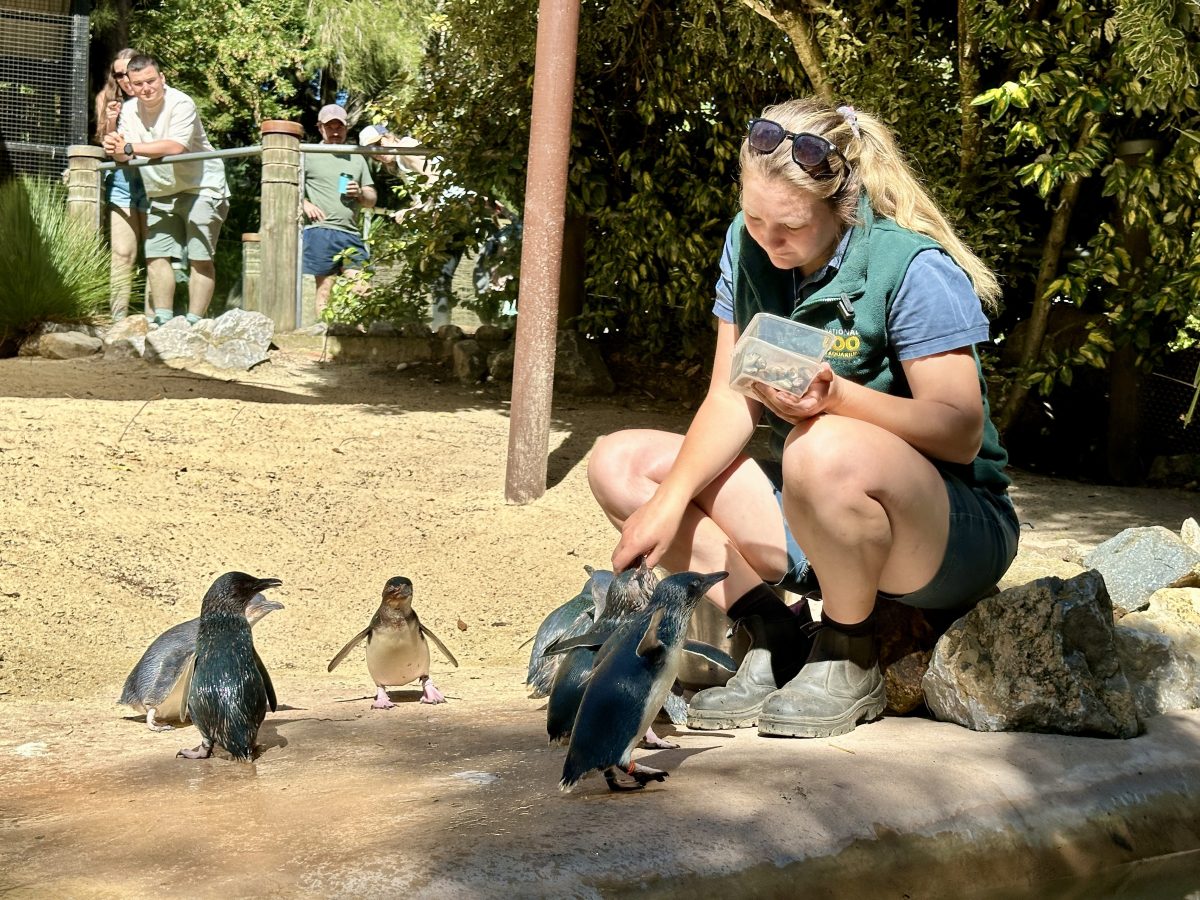
Keeper Jemma Walsh feeding fish to the Little Penguins at the National Zoo and Aquarium. Photo: James Coleman.
The National Zoo and Aquarium is enjoying an uptick in visitor numbers over the school holidays, and Jatz, McVitie, Monte and Oreo are a few reasons why.
Born at the end of October 2023, these four are the Canberra Zoo’s newest Little Penguins.
“We’ve kept it a little secret for a while, just as they’ve been finding their flippers in the water,” keeper Jemma Walsh says.
“For five weeks, they were raised by their parents, and then we actually got the privilege of helping to raise them – we got to teach them to swim, eat from us, everything like that.”
Now, in time for World Penguin Day today (20 January), they’ve joined their parents in the big pond. All up, there are 16 in the enclosure.
“Their parents are named after rappers,” Jemma adds.
“So we have Jay-Z, LL Cool J and 360. But we’re adding a different theme to these baby penguins.”
The Little Penguin is the world’s smallest penguin species, measuring between 40 and 45 cm tall and weighing up to 1.2 kg when fully grown.
Other names for the species include fairy penguin, little blue penguin, or blue penguin, but the scientific name of Eudyptula minor literally means “good little diver”, and they’re certainly that too.
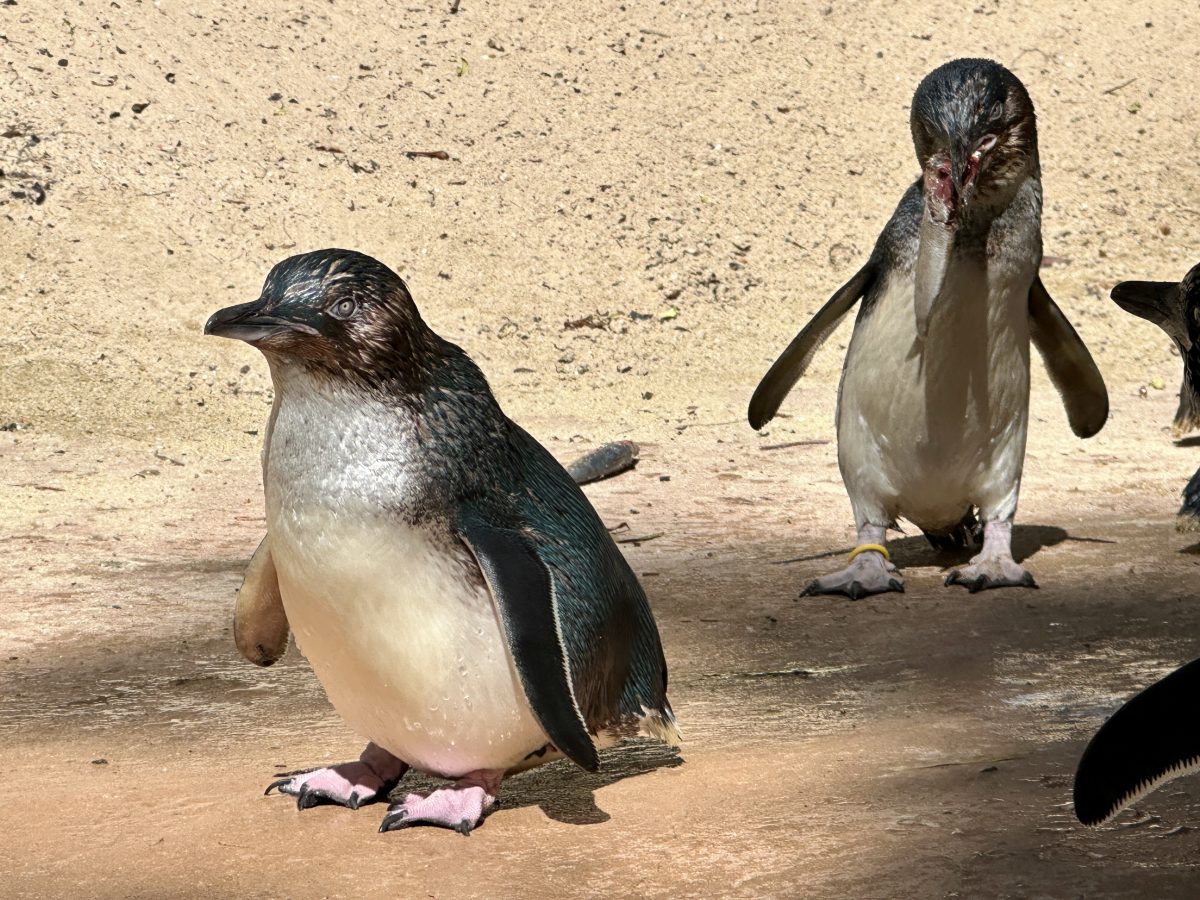
The blue and white colouring is part of their camouflage. Photo: James Coleman.
They are only found in Australia and New Zealand, with especially large colonies on Phillip Island and Kangaroo Island. By eight weeks old, Little Penguins are making their own trips out to sea, using their flippers to propel through the water at speeds of up to 6 km/h.
They consume their body weight in small fish and krill every day, often from as far as 60 metres below the surface.
The blue back with greyish-white underbelly works as camouflage, blending in with the sea from above and with the reflection of the surface for sharks and seals below.

Little Penguins live for an average of seven years in the wild, and most have the same mate for life. Photo: James Coleman.
They can doze floating on the water but come ashore to rest, mate and moult, burrowing homes in sand dunes or making nests in rocky crags and caves. They can’t swim while moulting because the feathers lack the oily waterproof coating secreted from a gland near the tail.
Jemma says the Little Penguin chicks come at a good time for the zoo, not just for visitor numbers.
“We’re able to highlight the struggles penguins face out in the wild – climate change and over-fishing the two main threats, but also things like plastic bags and other rubbish going into our waterways.
“One thing we’re saying is if you’re going anywhere near waterways, pack your bubble wand instead of bringing all your balloons and letting them go into your waterways.”
The largest conservation efforts are taking place on Phillip Island, where nine of the 10 colonies became extinct in the 1980s, largely due to land-based threats such as housing development, traffic, fire and domestic pets. They were all expected to be gone by the late 1990s.
However, the Victorian Government’s move to buy back homes from the location of the last colony and other painstaking efforts have resulted in a steady increase in numbers on the island, from 12,000 in the mid-1980s to an estimated 32,000 today.
Jatz, McVitie, Monte and Oreo will stay in captivity at the zoo as part of a national breeding program.
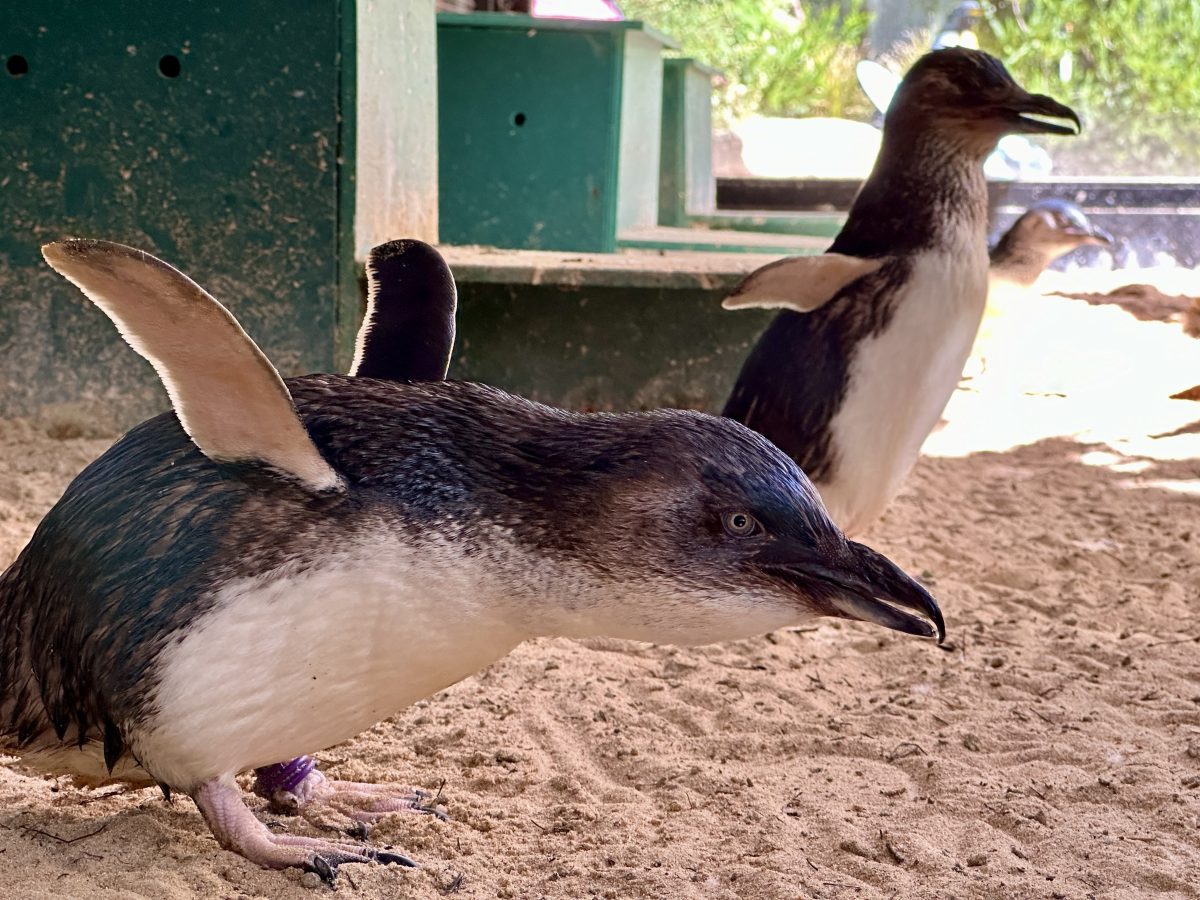
Little Penguin numbers on Phillip Island have nearly tripled since their low point in the mid-1980s. Photo: James Coleman.
“The way we can tell them apart from the big group is they’re a little bit smaller, a little bit lighter in colour, and have a little bit of a shorter beak than the adults,” Jemma says.
A “massive part” of what the zoo provides them with is called “enrichment”.
“We’ve done bubbles, mirrors, bells, but my favourite is playing classical music for them,” Jemma says.
“Interestingly, they all stand and listen.”
The National Zoo and Aquarium is open from 9:30 am to 5 pm every day (except Christmas Day).












